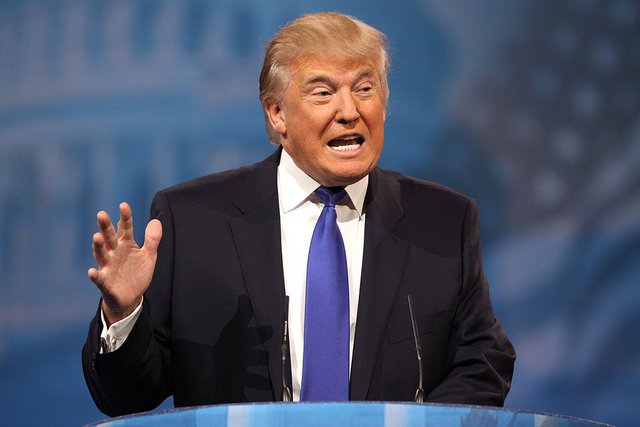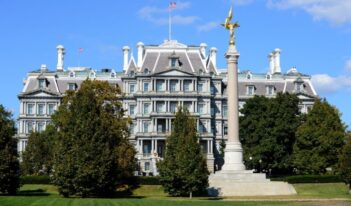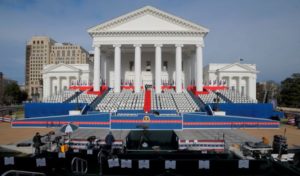
Experts argue that Donald Trump’s focus on jobs and worker impacts instead of the application of the net social benefits test is imprudent.
Donald Trump’s campaign message has displayed a focus on workers that sometimes makes him sound more akin to a 20th-century Russian or Chinese official than the 2016 Republican Party nominee for President of the United States. “Five, ten years from now—different party,” he said recently when asked what the Republican Party would look like in the future. “You’re going to have a worker’s party.”
What might that mean for regulatory policy?
It would mean, for one, that under a Trump presidency, “any future regulation will go through a simple test: is this regulation good for the American worker?” If the regulation does not pass this test, according to Trump, “the rule will not be approved.” This approach to regulatory policy is one that Trump has vowed to introduce during his first 100 days in office, if he is elected President.
For the past 40 years, however, Presidents from both parties have applied a “net social benefits” test when making regulatory decisions. For example, President Ronald Reagan built on earlier frameworks established by President Jimmy Carter when he issued Executive Order 12291, which reserved regulatory action unless the regulation’s potential benefits to society outweighed its potential societal costs. Under that framework, regulatory objectives were “chosen to maximize the net benefits to society.”
Similarly, in 1993, President Bill Clinton issued Executive Order 12866, which provided that, in choosing a regulatory approach, “agencies should select those approaches that maximize net benefits, including potential economic, environmental, public health and safety, and other advantages.” President George W. Bush retained the Clinton Executive Order, as has President Barack Obama, who, in issuing Executive Order 13563, reinforced the requirement that agencies “propose or adopt a regulation only upon a reasoned determination that its benefits justify its costs (recognizing that some benefits and costs are difficult to quantify).”
All of these presidential statements of regulatory principle draw on the science of benefit-cost analysis, which, for more than a century, has been used to sort through the competing claims of special interests in order to come up with a workable indication of the general welfare. It is inevitable that government regulation will produce losers—those who would prefer a different policy—as well as winners; if there were no disagreement, we would not need the force of law to proceed. Benefit-cost analysis asks the question: “If the winners could compensate the losers, might this regulation be adopted by unanimous consent?” Such potential Pareto improvements are deemed to have passed the benefit-cost test.
In trying to construct a set of policy preferences that reflect the general welfare, benefit-cost analysis looks only at the net gains to society; it is, by design, indifferent to the identities of the winners and the losers. In part, this is because analysts do not have very good tools for determining the final incidence of regulatory benefits and costs, which would pose a challenge to a policy of singling out effects on workers, as Trump proposes to employ.
Typically, analysts estimate the cost of regulatory compliance on businesses. As artificial persons, however, businesses do not experience welfare changes and do not have preferences of their own. Business compliance costs, therefore, are used as a proxy for costs that are passed through to real people. They may be passed through to customers in the form of higher prices, to workers in the form of lower wages, to taxpayers in the form of reduced revenue, or to investors in the form of lower returns. Finally, regulations might ultimately cause a business to close—creating invisible, but still very real, opportunity costs for all four groups. It is difficult to predict who will bear how much of these costs, even if we have a pretty good idea of their overall magnitude.
If elected President, how might Trump’s focus on workers change things? Taken at face value, the Trump criterion would elevate the interests of American workers above those of consumers, taxpayers, and investors—including retirees.
This is troubling, and it may be too harsh a characterization of Trump’s policy views, but it is consistent with his rhetoric in other contexts. For example, Trump describes his approach to business in terms of winners and losers, rather than in terms of gains from trade. He speaks with pride of his negotiating skills, rather than his ability to add value. He appears to see the world through zero-sum glasses.
Trump’s views on trade may be indicative of how he would approach regulation. His policies on trade focus squarely on protecting American workers from competition overseas. This perspective does not recognize that American workers are also consumers and taxpayers, as well as investors (if not directly, then through their pensions and insurance plans). And American consumers and investors would most certainly lose from protectionist policies. Trump talks about jobs, but jobs are an imperfect measure of regulatory benefits and costs. Ultimately, what we all want are the final goods and services that economic activity produces, and competitive markets are the most effective way to produce them.
With the exception of weapons exports that might endanger national security, there is no plausible economic argument in favor of government-imposed trade barriers. If there is no market failure, trade restrictions will not produce net social benefits, and therefore cannot pass a benefit-cost test. This is why recent Presidents have generally pursued the elimination of trade barriers, either via multilateral institutions, like the World Trade Organization, or through bilateral Free Trade Agreements. Trump would break from this pattern; he views competition as a fight that “we” need to “win,” rather than as a spur to efficiency and as an engine of economic growth.
Trump’s comments during the first debate threw this viewpoint into sharp relief, when he argued that domestic jobs are “fleeing the country. They’re going to Mexico. They’re going to other countries. You look at what China is doing to our country in terms of making our product. They’re devaluing their currency, and there’s nobody in our government to fight them. And we have a very good fight. And we have a winning fight.”
However, it is not clear that Clinton’s views on trade are much different, particularly when viewed in light of this message that she shared at the first debate: “When I was in the Senate, I had a number of trade deals that came before, and I held them all to the same test. ‘Will they create jobs? Will they raise incomes in America? And are they good for our national security?’”
She did not ask whether freer trade will lower prices in America or provide goods, like televisions, or smartphones, that Americans want. And neither did Trump.
Both candidates would do well to read French author and economist Frédéric Bastiat’s famed satirical parable, The Candlemakers’ Petition, in which the 19th-century lighting industry seeks government protection from unfair competition with the sun, through laws forcing residents to shutter windows. Yes, it could be argued that the sun is somehow stealing potential jobs from American workers. But is that really a bad thing? And does it make any sense to try to “win” a competition against the sun?
It is difficult to predict where a worker-centric regulatory policy will lead because there is no principled way to evaluate whether a policy will “be good for the American worker.” Would it benefit workers to give them better machines, so that they are more productive? Or should the government take away their machines, in order to create more jobs?
The imprudence of focusing on jobs or worker impacts instead of applying the broader net social benefits test that every president since Reagan has supported is perhaps best exemplified by the story told by Nobel Prize-winning economist Milton Friedman. When traveling in an Asian country, Friedman was surprised to find workers building a new canal using shovels. He asked his government host why there were so few machines, and the official explained, “You don’t understand. This is a jobs program.” To which Friedman replied: “Oh, I thought you were trying to build a canal. If it’s jobs you want, then you should give these workers spoons, not shovels.”
The image of Donald Trump is the property of the Gage Skidmore and is used under a Creative Commons License.





